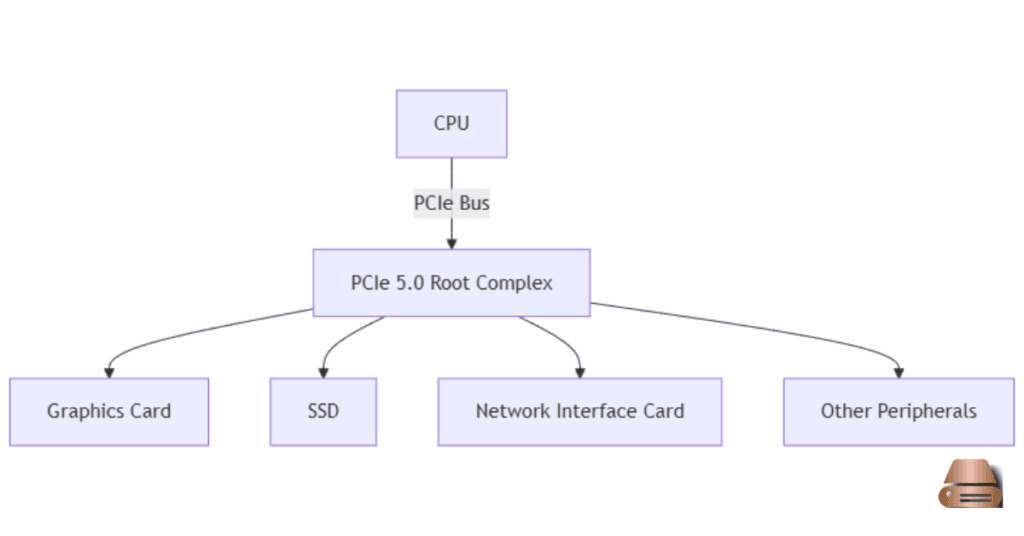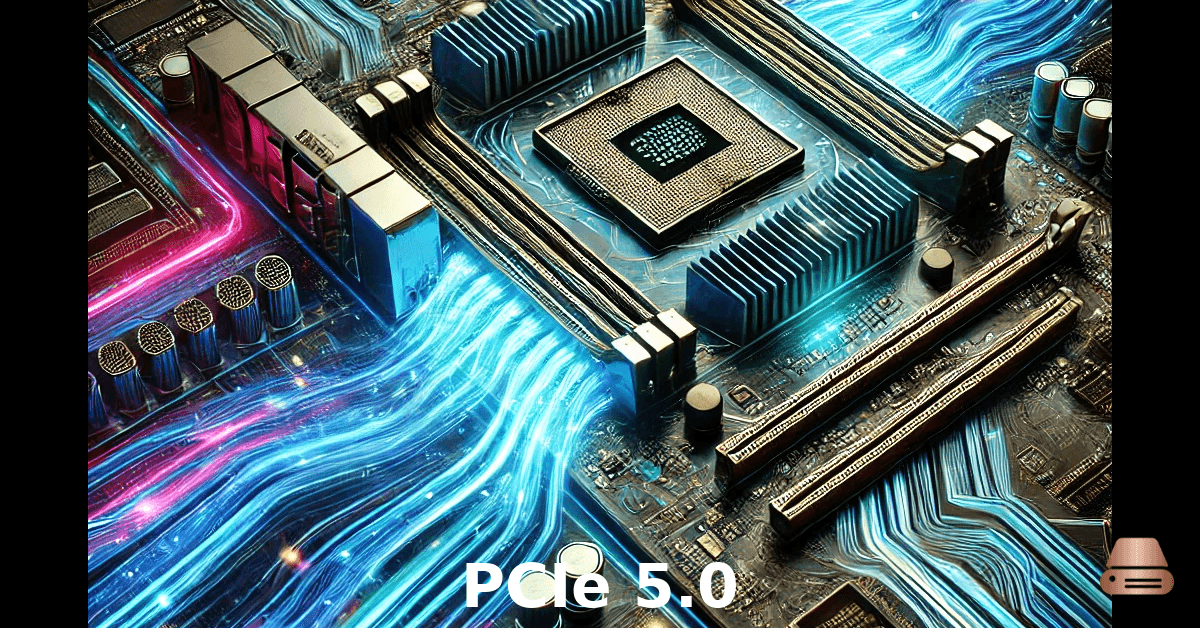The introduction of PCI Express (PCIe) 5.0 represents a transformative shift in data transfer speeds and system performance. As the backbone for modern computing, PCIe 5.0 plays a critical role in enhancing the efficiency of next-generation solid-state drives (SSDs) and computing platforms.
What Is PCI Express 5.0?
PCI Express 5.0 is the latest iteration of the PCIe standard, offering double the bandwidth of its predecessor, PCIe 4.0. The PCIe 5.0 specification supports a per-lane data rate of 32 GT/s (Giga transfers per second), equating to a maximum bidirectional throughput of 128 GB/s when utilizing a 16-lane (x16) configuration.
This unprecedented speed provides critical benefits for high-performance applications such as gaming, data centers, artificial intelligence (AI), machine learning (ML), and other workloads demanding ultra-fast data processing.
Key Features of PCI Express 5.0
1. Enhanced Bandwidth
PCIe 5.0 doubles the bandwidth per lane compared to PCIe 4.0. For SSDs, this translates into a theoretical maximum transfer speed of up to 16 GB/s for a single x4 slot.
2. Improved Signal Integrity
To maintain reliable high-speed data transmission, PCIe 5.0 incorporates advanced signal integrity features, including better equalization, adaptive receiver designs, and support for higher-quality materials in motherboard traces.
3. Backward Compatibility
PCIe 5.0 retains backward compatibility with PCIe 4.0, 3.0, and older versions, ensuring that existing hardware remains usable while allowing for seamless upgrades.
4. Lower Latency
The specification introduces optimizations that reduce transmission latency, a critical factor for time-sensitive computing tasks.
5. Power Efficiency
PCIe 5.0 employs refined power management protocols to ensure that higher performance does not come at the cost of excessive energy consumption.
Why PCI Express 5.0 Matters for SSDs
The SSD market is rapidly evolving to meet the demands of modern computing workloads. PCIe 5.0 enables SSDs to achieve unparalleled performance levels, unlocking new possibilities for industries and end-users alike.
1. Ultra-Fast Data Transfers
PCIe 5.0 SSDs can reach sequential read/write speeds of up to 14–16 GB/s. This allows users to handle massive data sets, from 8K video editing to scientific simulations, with minimal bottlenecks.
2. Enhanced Scalability
As the amount of data generated continues to grow exponentially, the increased bandwidth of PCIe 5.0 ensures SSDs can keep up with storage and retrieval demands.
3. Enterprise Applications
Data centers and enterprise systems benefit significantly from PCIe 5.0 SSDs, particularly in high-input/output operations per second (IOPS) scenarios such as database management and virtualized environments.
4. Gaming and Content Creation
For gamers and creative professionals, PCIe 5.0 SSDs minimize load times, accelerate workflows, and provide a smoother overall experience.
Comparing PCIe 4.0 and PCIe 5.0 SSDs
| Feature | PCIe 4.0 SSDs | PCIe 5.0 SSDs |
|---|---|---|
| Bandwidth per Lane | 16 GT/s | 32 GT/s |
| Maximum x4 Bandwidth | ~8 GB/s | ~16 GB/s |
| Latency | Moderate | Lower |
| Use Cases | High-performance tasks | Next-gen workloads |
Anticipating PCIe 5.0 Ecosystem Growth
The adoption of PCIe 5.0 is accelerating across industries. Motherboards supporting PCIe 5.0, such as those based on Intel’s 12th Gen and AMD’s Ryzen 7000 series, are already widely available. Upcoming graphics cards, network adapters, and accelerators will further leverage the standard’s capabilities.
PCIe 5.0 Architecture

Conclusion
PCI Express 5.0 is poised to redefine the computing landscape. Its unmatched bandwidth, improved efficiency, and ability to support demanding applications ensure it is a cornerstone of next-generation technology. For SSDs, PCIe 5.0 unlocks performance levels that were previously unattainable, paving the way for faster, more responsive, and more capable computing systems. Embracing PCIe 5.0 today means preparing for the future of high-speed data processing.
Frequently Asked Questions
Do I need a new motherboard for PCIe 5.0?
Yes, to fully utilize PCIe 5.0, you need a compatible motherboard with PCIe 5.0 slots, such as those supporting Intel’s 12th Gen or AMD’s Ryzen 7000 series CPUs.
What are the main benefits of PCIe 5.0?
PCIe 5.0 offers higher bandwidth, lower latency, improved power efficiency, and better support for high-performance applications like gaming, AI, and data center operations.
Can I upgrade my current SSD to PCIe 5.0?
You can upgrade to a PCIe 5.0 SSD if your motherboard and system support the standard. Ensure compatibility before making a purchase.
